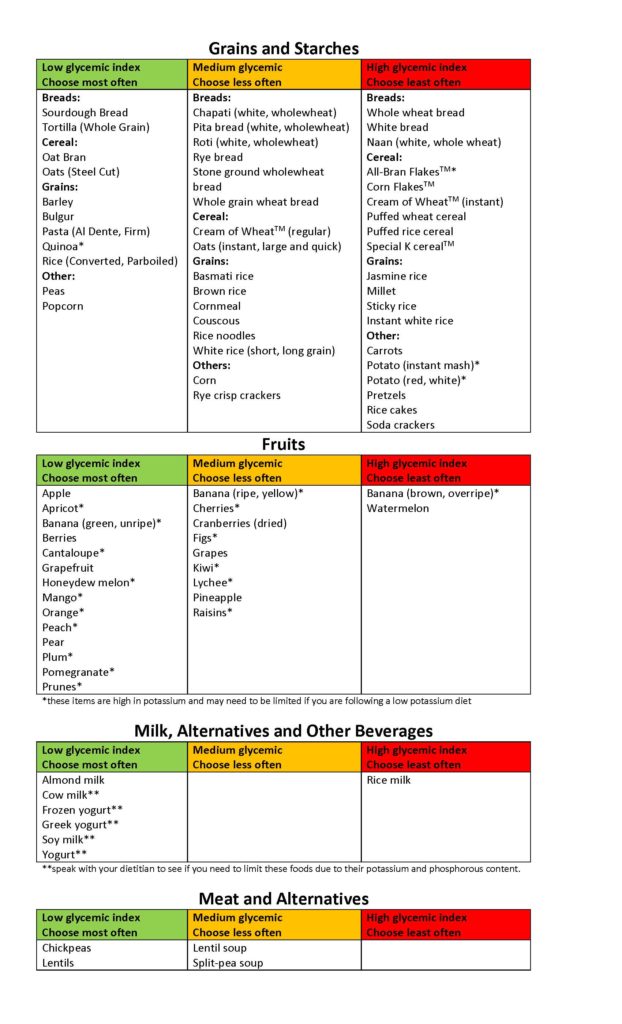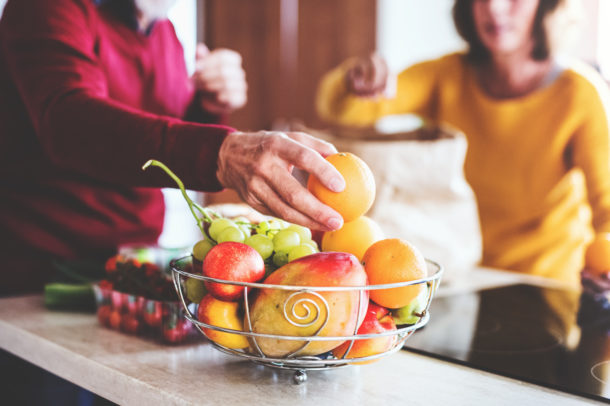Submitted by Fiona Bellefeuille RD, CDE
If you have diabetes, you may have heard about the glycemic index.
It is a scale for carbohydrate-containing foods that ranks them based on how fast they will break down into sugar in your body. If a food has a high glycemic index, it will break into sugar quickly after you eat it, causing your blood sugar to rise. If a food has a low glycemic index, it will break down into sugar much slower, leading to a gentler rise in blood sugar.
This index can be helpful to those trying to improve their blood sugar control. Diabetes Canada has a useful handout that divides foods into a traffic light system listing foods with low – medium – high glycemic foods listed. You can find it here.
The challenge with the glycemic index is that some of the beneficial low glycemic index foods may not be appropriate for people with kidney disease due to high potassium, phosphorous or sodium content.
The following table ranks kidney-friendly foods based on their glycemic index to help you make informed choices. Choose lower glycemic index foods more often and opt for high glycemic foods less frequently.

Foods that do not contain carbohydrates do not have a glycemic index, for example, meat, chicken, fish, and non-starchy vegetables.
Having both diabetes and kidney disease can make meal planning challenging. It is a good idea to ask your diabetes or kidney specialist for a referral to a Registered Dietitian as they can help you improve your health by managing both of these conditions.
